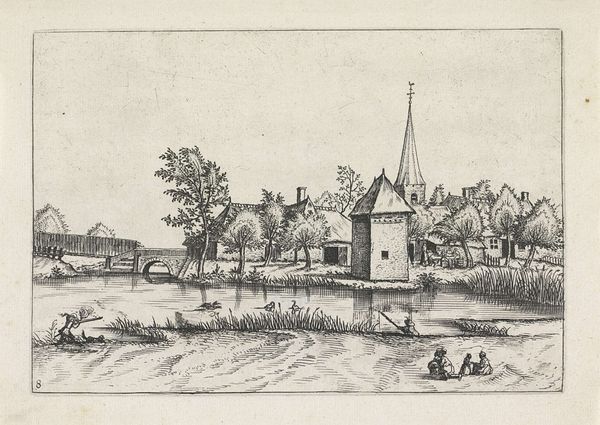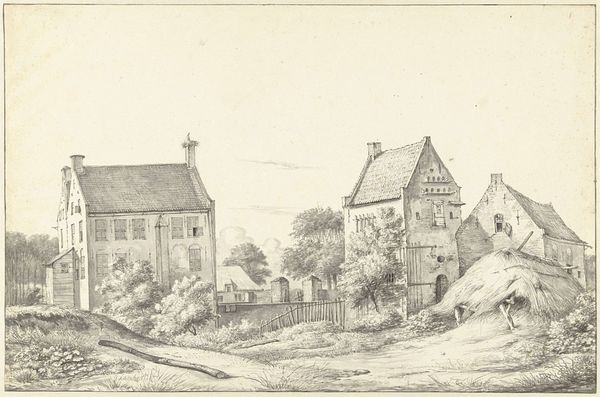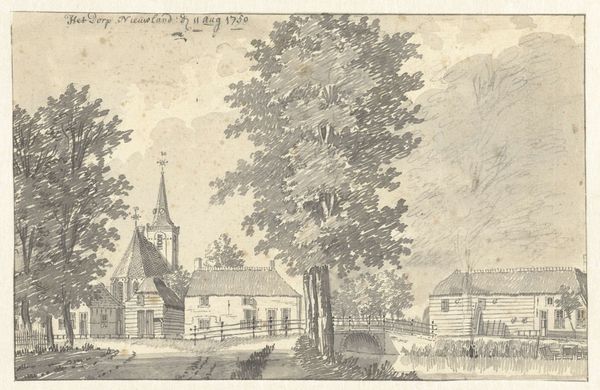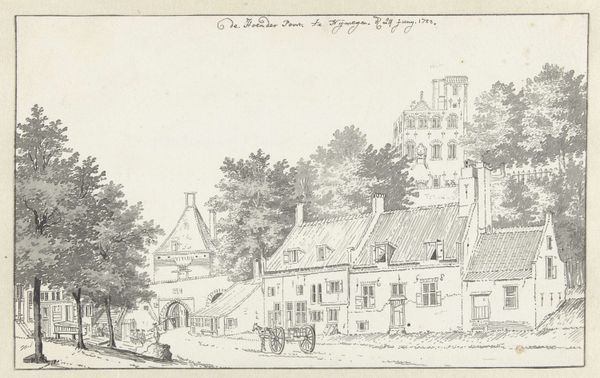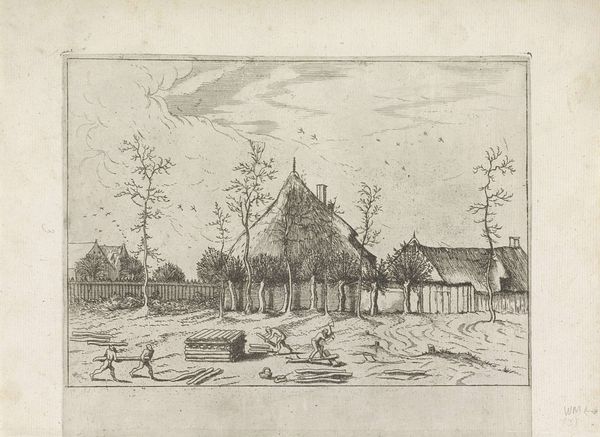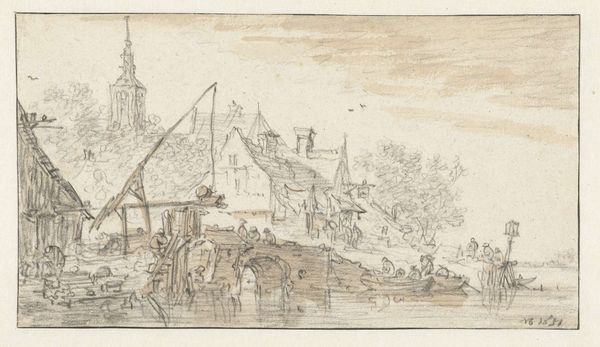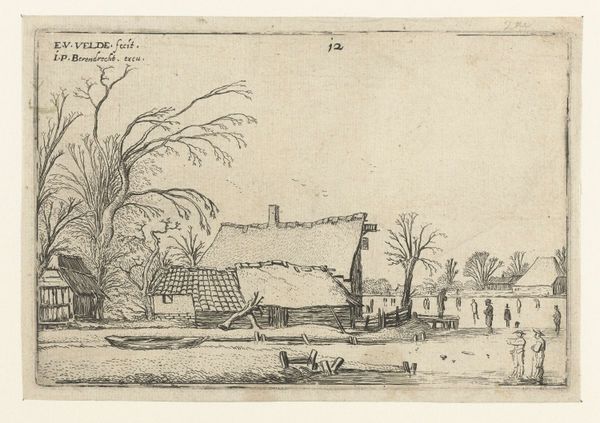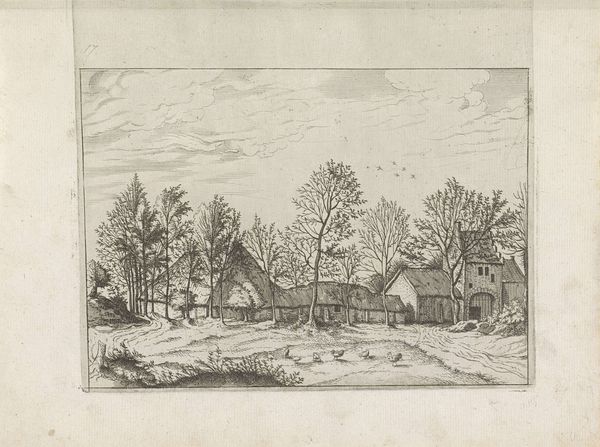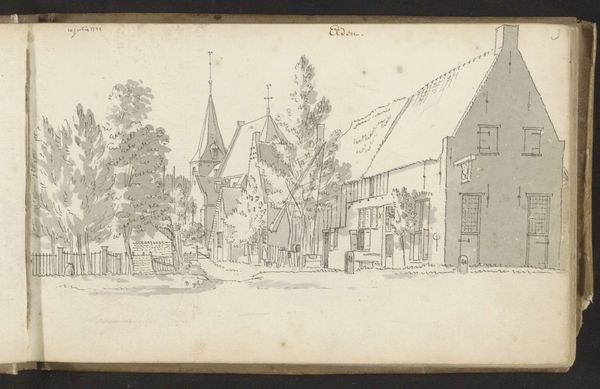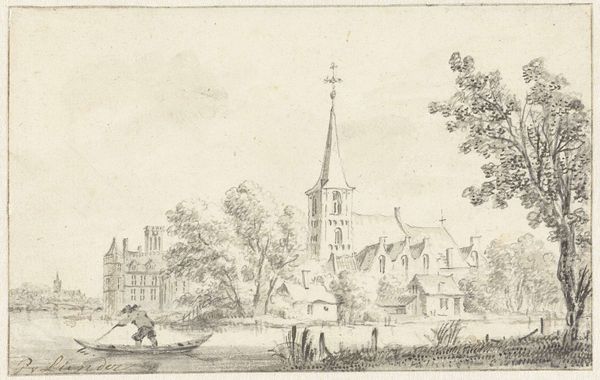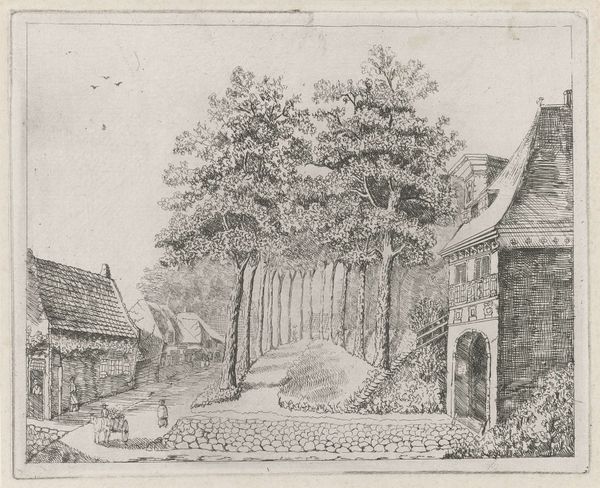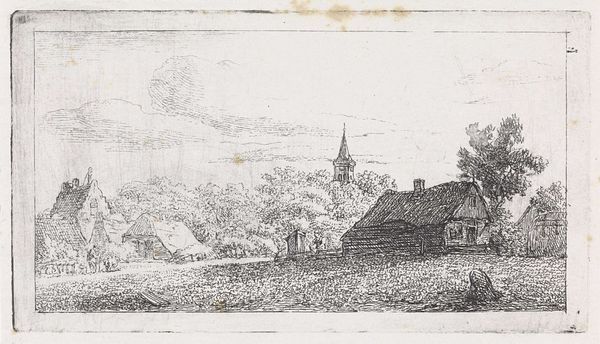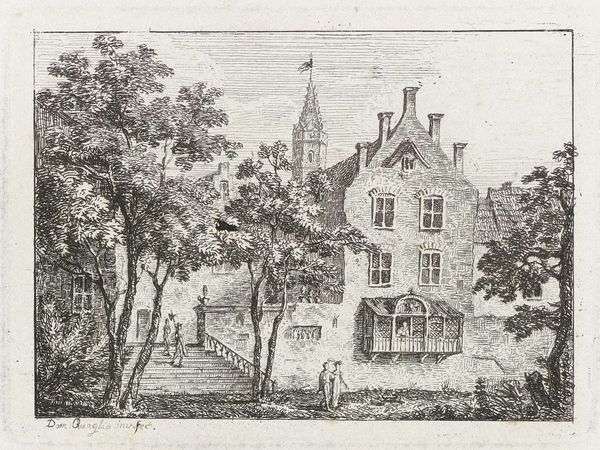
drawing, ink
#
drawing
#
dutch-golden-age
#
landscape
#
ink
#
cityscape
Dimensions: height 146 mm, width 210 mm
Copyright: Rijks Museum: Open Domain
Jan de Beijer rendered this image of Nieuwland in pen and ink, a quaint Dutch village complete with a church, on the 4th of August, 1750. Dominating the scene is the church, crowned with a cross. This symbol, deeply embedded in the collective consciousness of Europe, represents salvation and faith. The cross atop the church is not merely a religious emblem; it is a nexus of cultural memory. We find antecedents in the ankh of ancient Egypt, a symbol of life. Later, its adoption by Christianity transformed it into a potent signifier of sacrifice and redemption. This symbol transcends its original religious context, surfacing in secular domains as an emblem of hope and unity. The steeple, reaching towards the heavens, echoes the ancient obelisks of Egypt. These architectural forms, like the cross, tap into a primal human desire to connect with the divine. The subconscious pull of such imagery is undeniable, engaging us in a silent dialogue that stretches across millennia. The steeple is at once a source of comfort, a sign of community, and a call to introspection. It is a testament to the enduring power of symbols to shape our perceptions and emotions, and to transcend time.
Comments
No comments
Be the first to comment and join the conversation on the ultimate creative platform.
